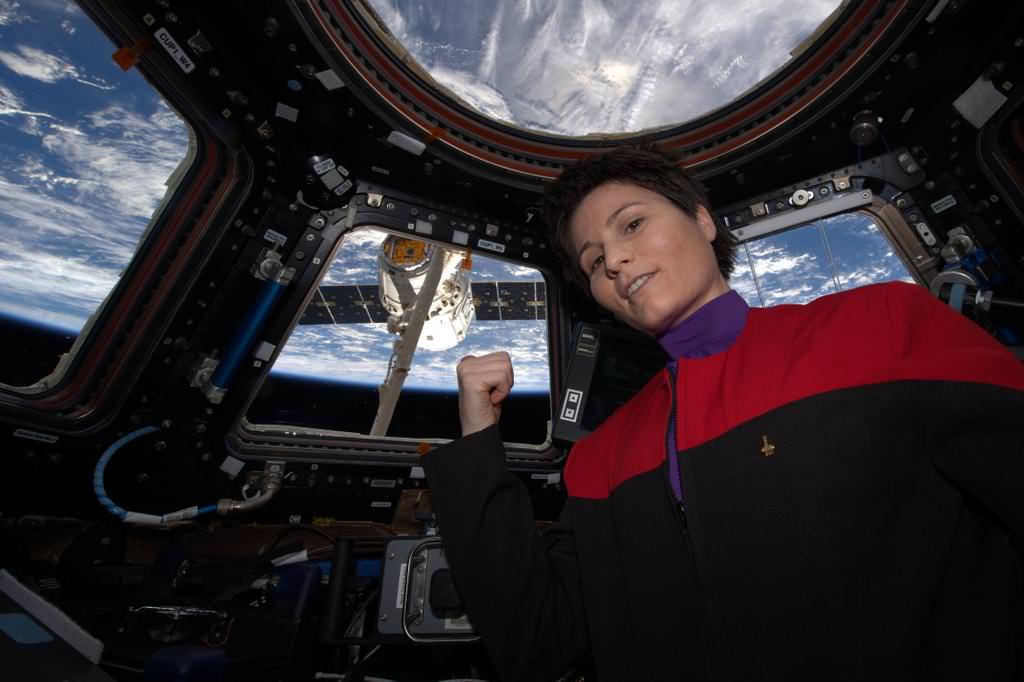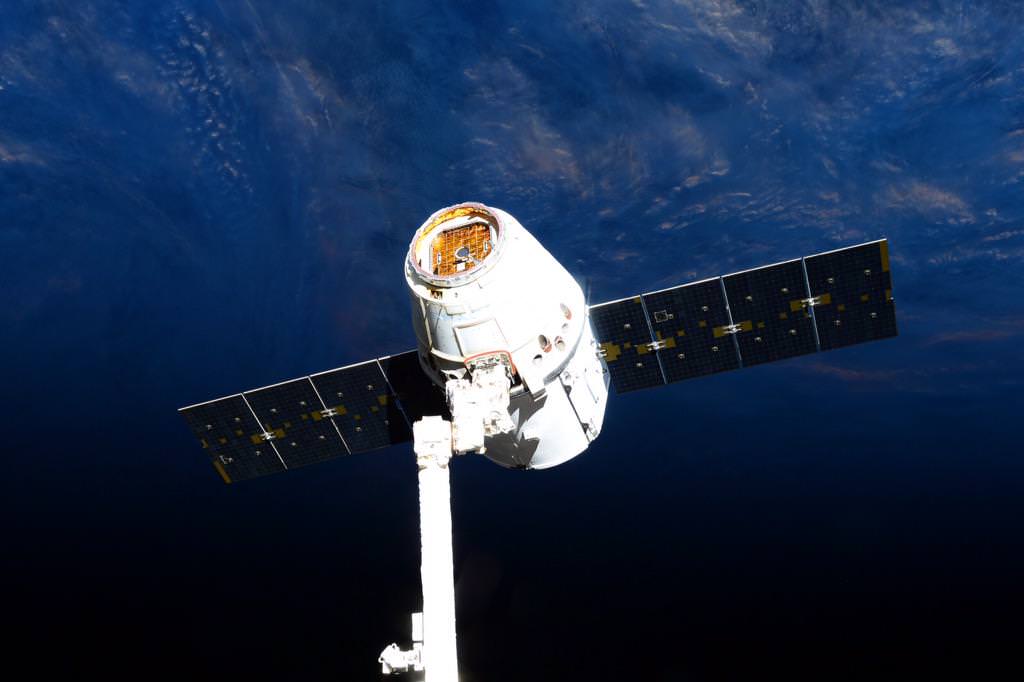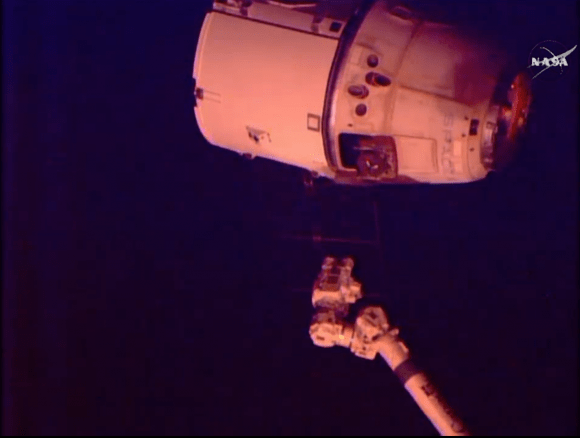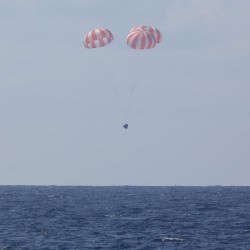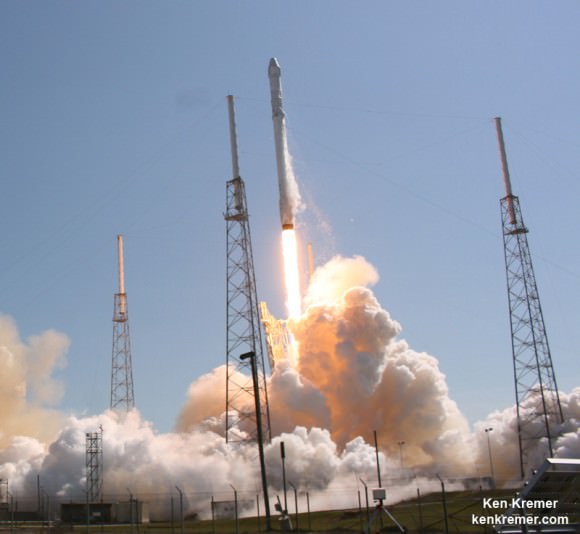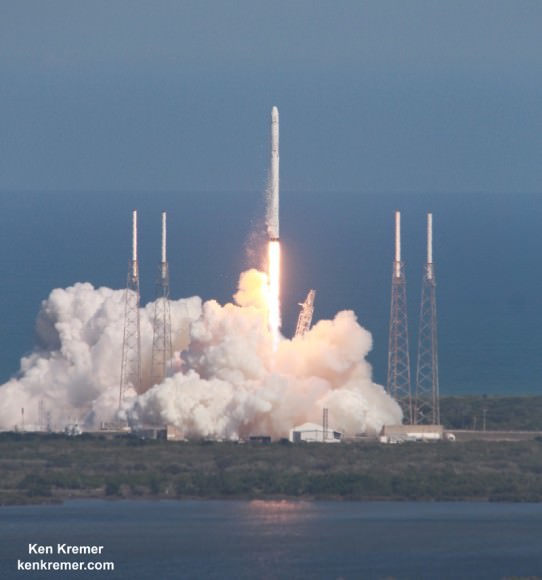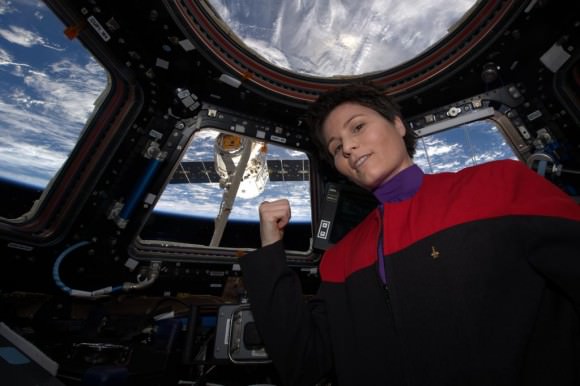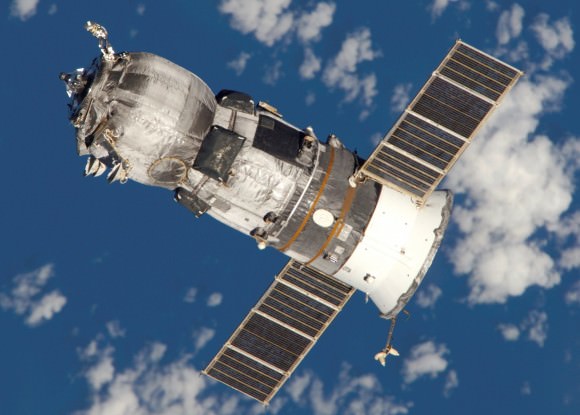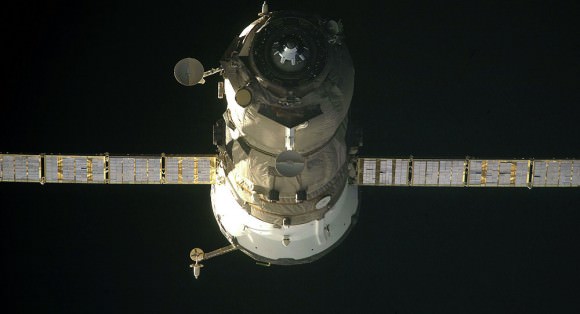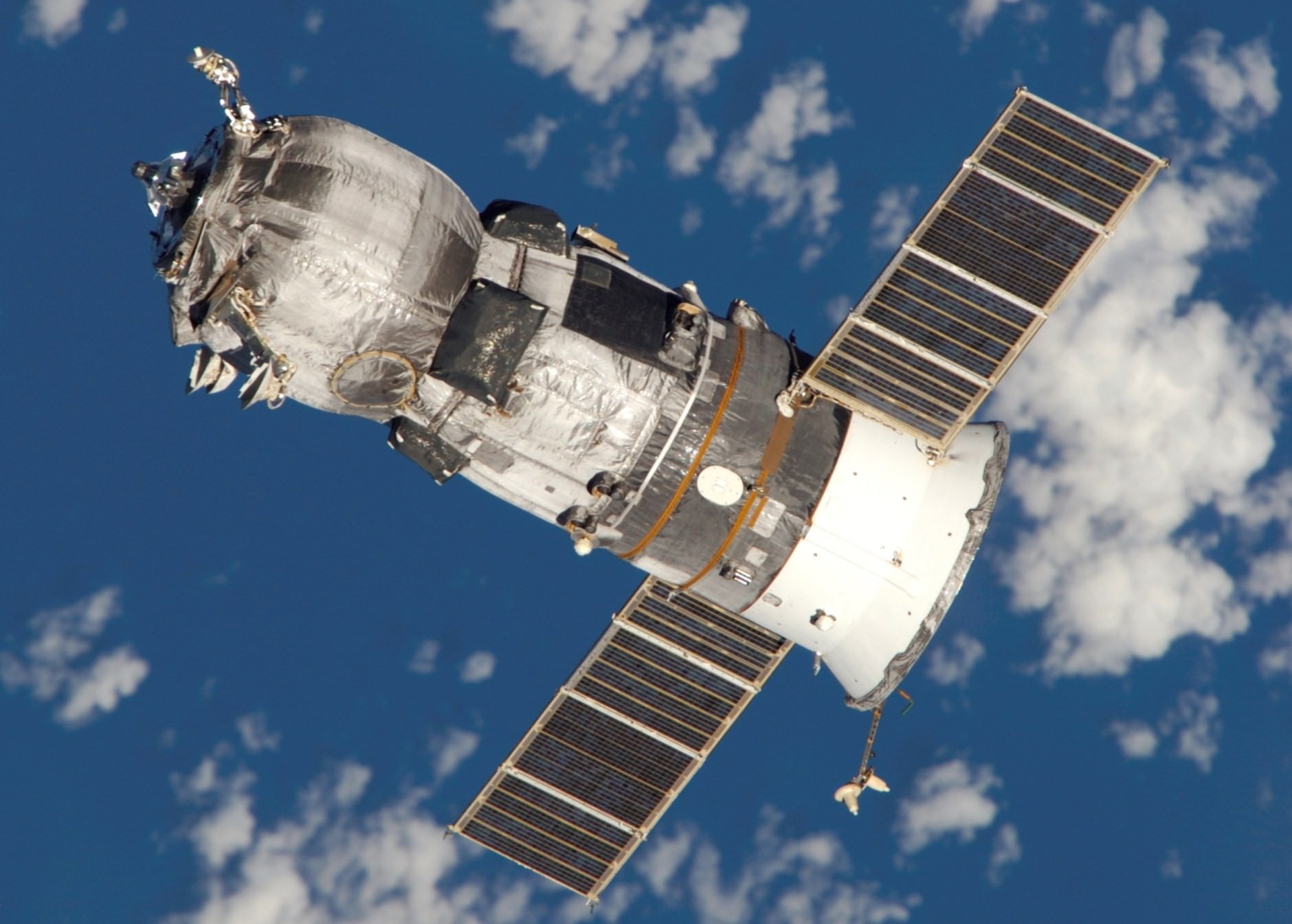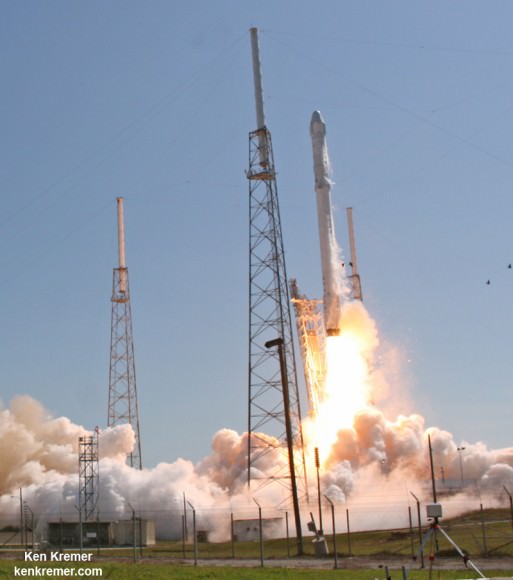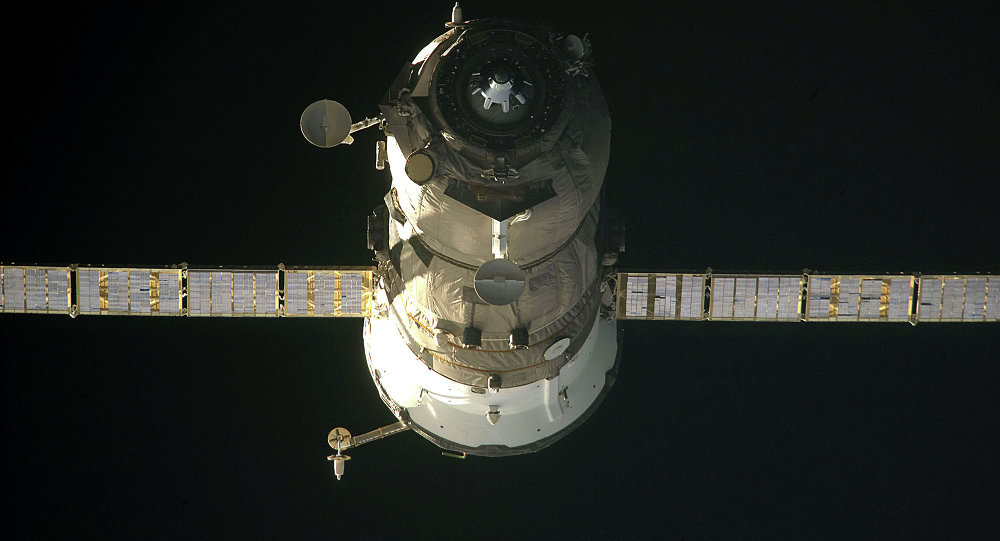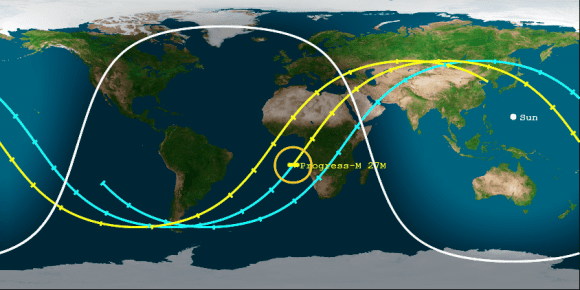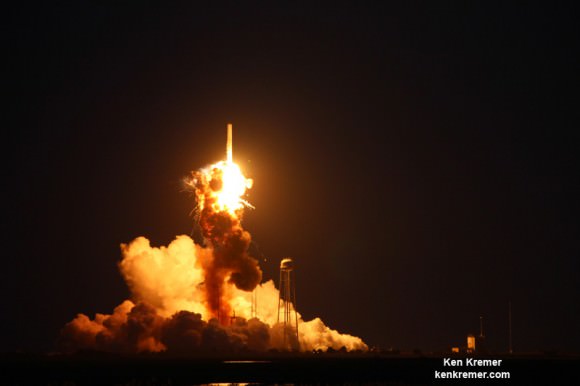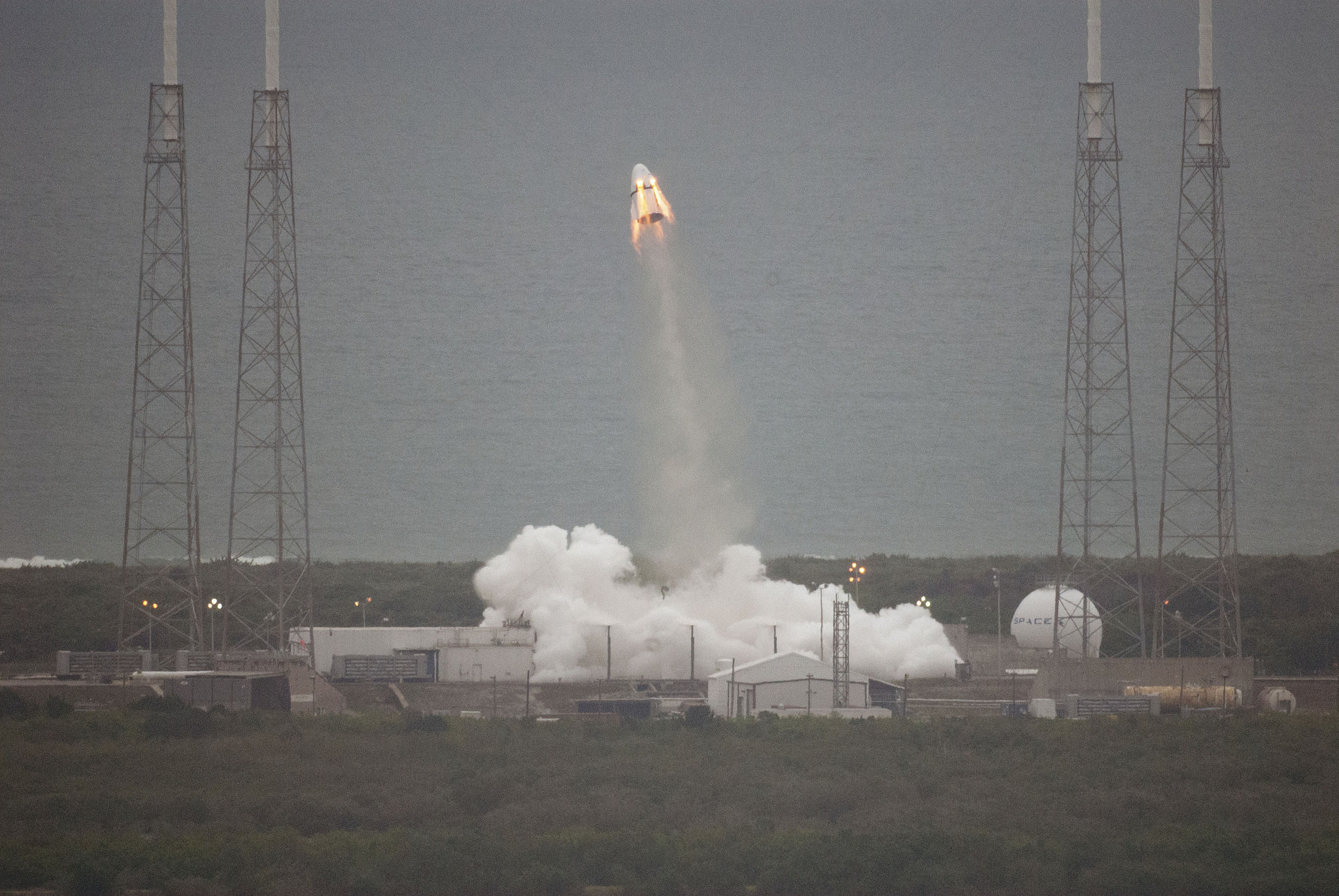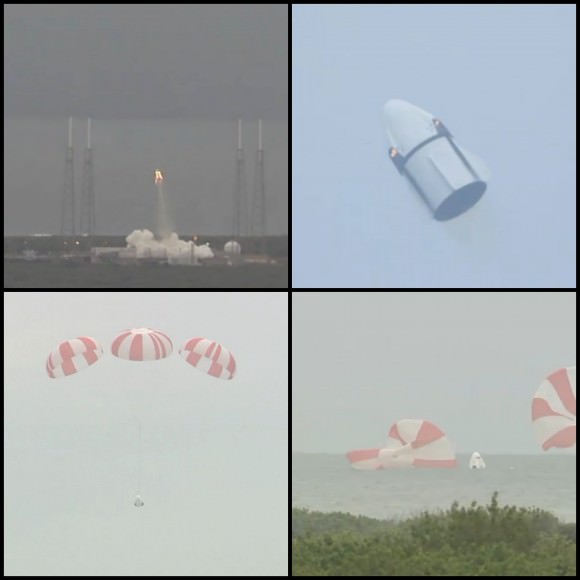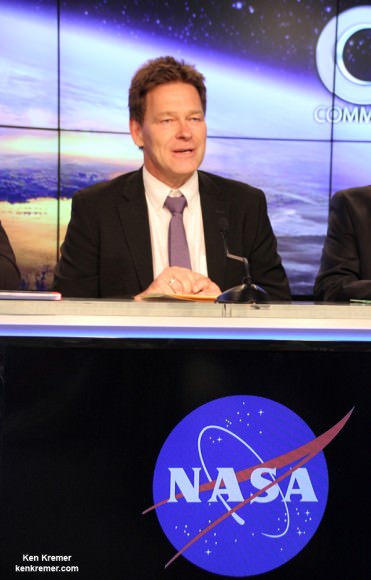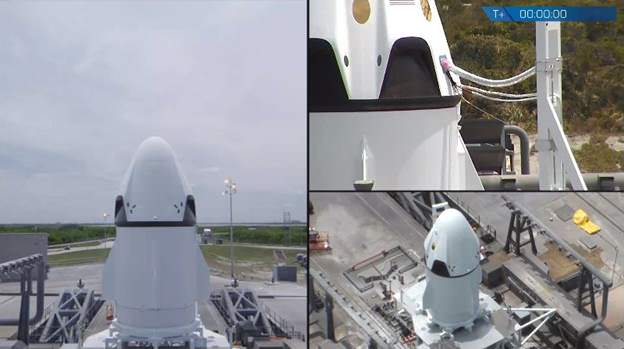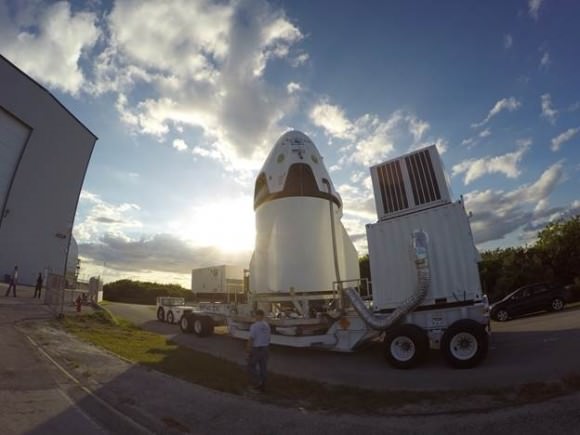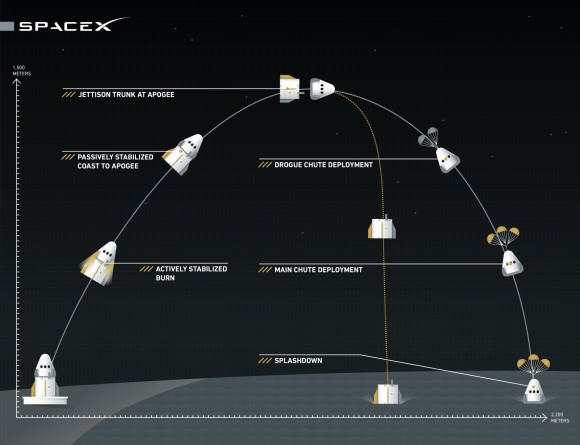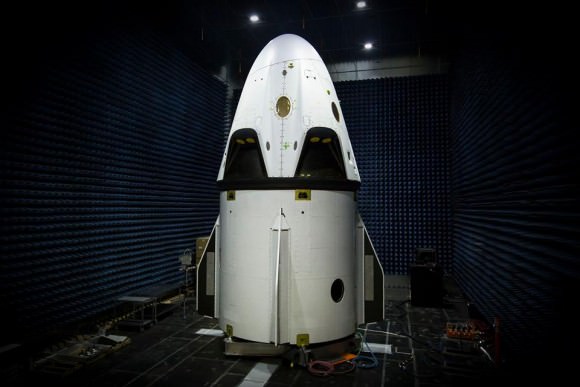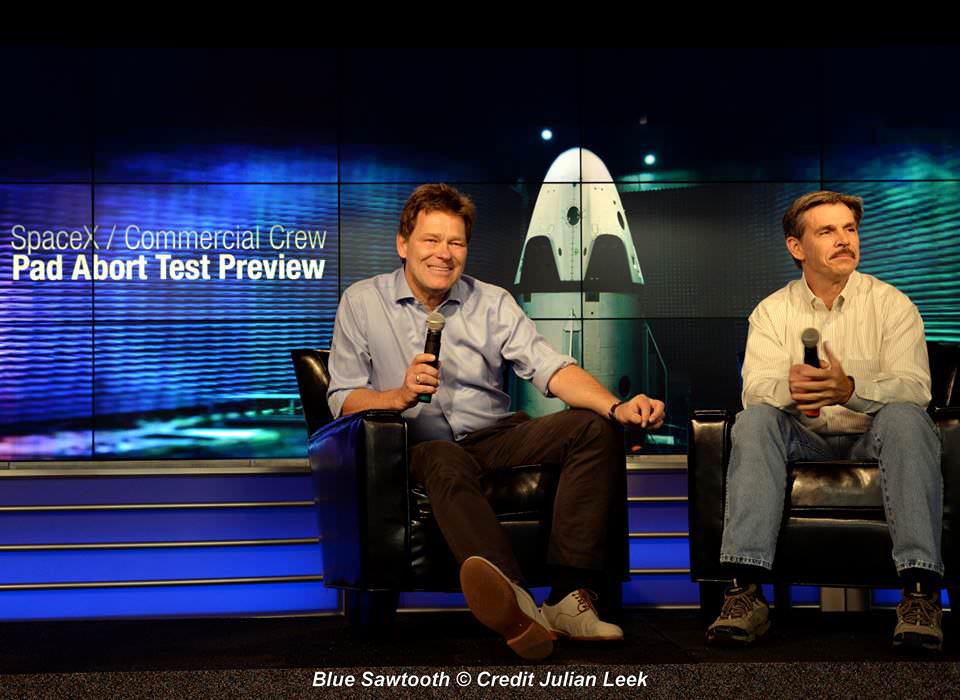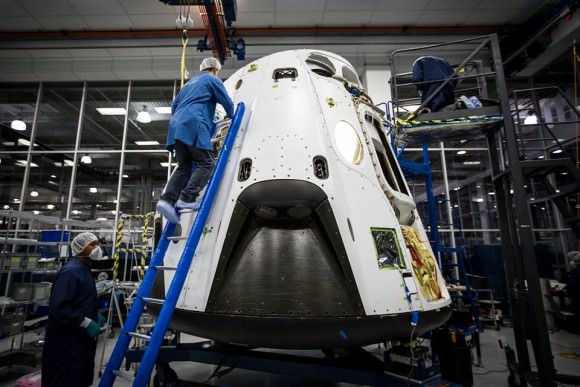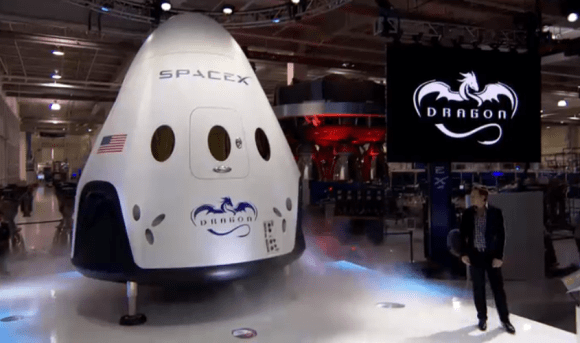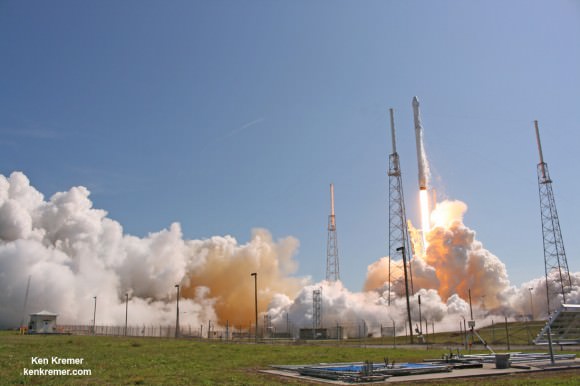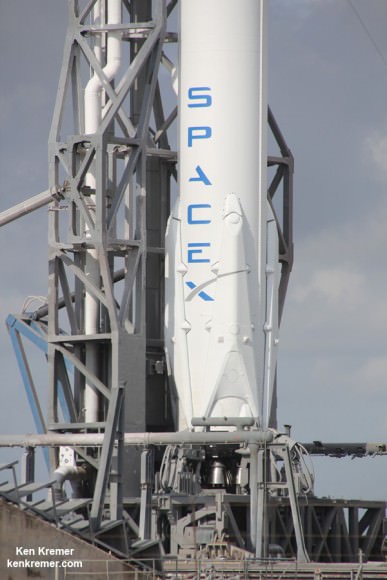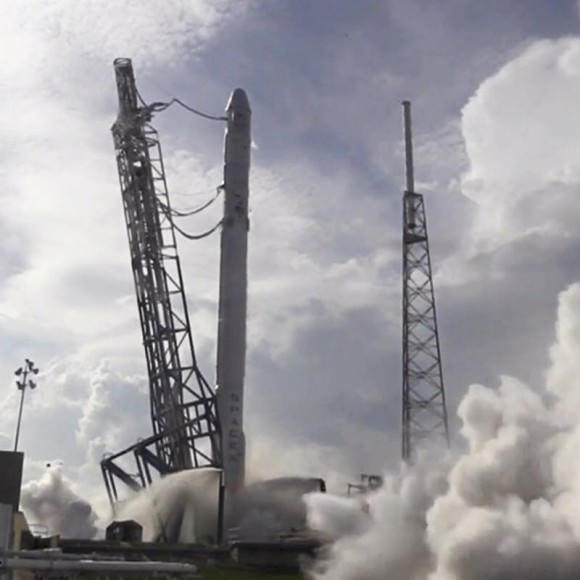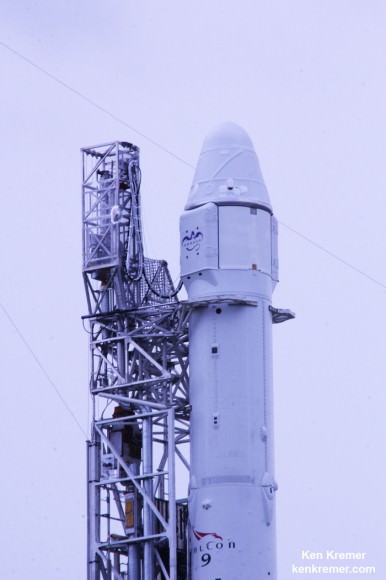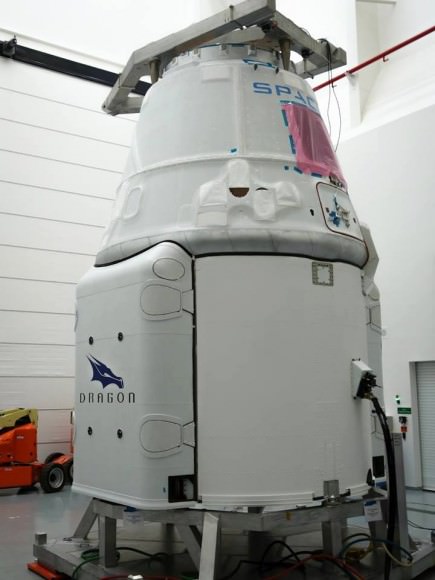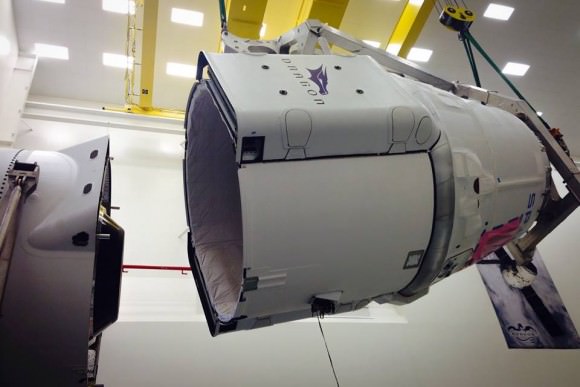The longest space mission in history by a female astronaut is now set to conclude on Thursday, following Russia’s confirmation of a significant reshuffling of the crew and cargo flight manifest to the International Space Station (ISS) for the remainder of 2015 – all in the wake of the unexpected Russian launch failure of a station bound Progress resupply ship in late April with far reaching consequences.
The record setting flight of approximately 200 days by Italian spaceflyer Samantha Cristoforetti, along with her two Expedition 43 crewmates, will come to an end on Thursday, June 11, when the trio are set to undock and depart the station aboard their Russian Soyuz crew capsule and return back to Earth a few hours later.
NASA TV coverage begins at 6 a.m. EDT on June 11.
Roscosmos, the Russian Federal Space Agency, officially announced today, June 9, a revamped schedule changing the launch dates of several upcoming crewed launches this year to the Earth orbiting outpost.
Launch dates for the next three Progress cargo flights have also been adjusted.
The next three person ISS crew will now launch between July 23 to 25 on the Soyuz TMA-17M capsule from the Baikonur cosmodrome in Kazakhstan. The exact timing of the Expedition 44 launch using a Russian Soyuz-FG booster is yet to be determined.

Soon after the Progress mishap, the Expedition 43 mission was extended by about a month so as to minimize the period when the ISS is staffed by only a reduced crew of three people aboard – since the blastoff of the next crew was simultaneously delayed by Roscosmos by about two months from May to late July.
Indeed Cristoforetti’s endurance record only came about as a result of the very late mission extension ordered by Roscosmos, so the agency could investigate the root cause of the recent launch failure of the Russian Progress 59 freighter that spun wildly out of control soon after blastoff on April 28 on a Soyuz-2.1A carrier rocket.
Roscosmos determined that the Progress failure was caused by an “abnormal separation of the 3rd stage and the cargo vehicle” along with “associated frequency dynamic characteristics.”
The Expedition 43 crew comprising of Cristoforetti, NASA astronaut and current station commander Terry Virts, and Russian cosmonaut Anton Shkaplerov had been scheduled to head back home around May 13. The trio have been working and living aboard the complex since November 2014.
The 38-year old Cristoforetti actually broke the current space flight endurance record for a female astronaut during this past weekend on Saturday, June 6, when she eclipsed the record of 194 days, 18 hours and 2 minutes established by NASA astronaut Sunita Williams on a prior station flight back in 2007.
Cristoforetti, of the European Space Agency (ESA), also counts as Italy’s first female astronaut.
The Progress 59 cargo vessel, also known as Progress M-27M, along with all its 2.5 tons of contents were destroyed during an uncontrolled plummet back to Earth on May 8.
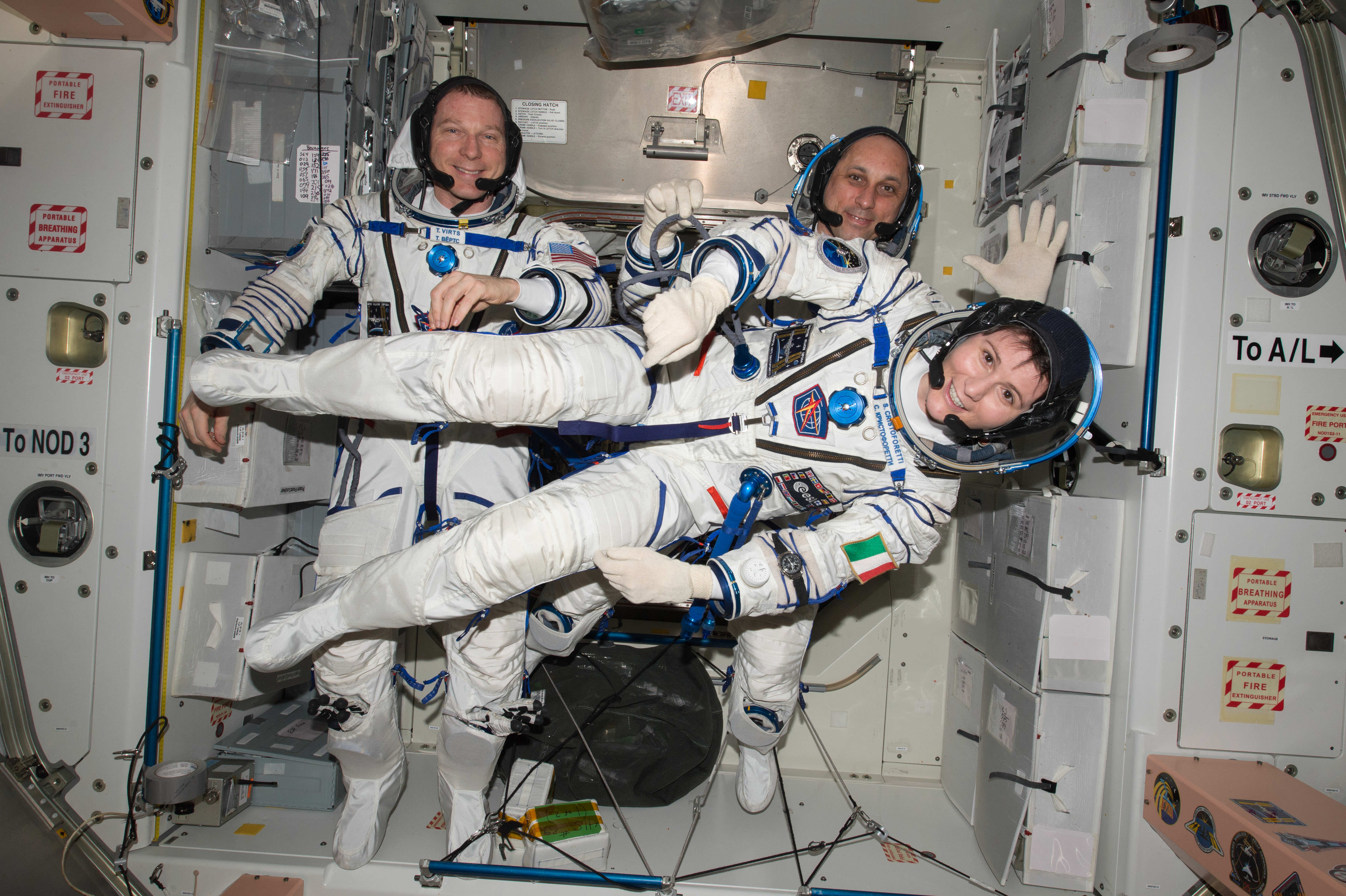
Roscosmos announced that they are accelerating the planned launch of the next planned Progress 60 (or M-28M) from August 6 up to July 3 on a Soyuz-U carrier rocket, which is different from the problematic Soyuz-2.1A rocket.
Following the Soyuz crew launch in late July, the next Soyuz will blastoff on Sept. 1 for a 10 day taxi mission on the TMA-18M capsule with cosmonaut Sergei Volkov and ESA astronaut Andreas Mogensen. After British opera singer Sarah Brightman withdrew from participating as a space tourist, a new third crew member will be named soon by Roscosmos.
The final crewed Soyuz of 2015 with the TMA-19M capsule has been postponed from Nov. 20 to Dec. 15.
Also in the mix is the launch of NASA’s next contracted unmanned Dragon cargo mission by commercial provider SpaceX on the CRS-7 flight. Dragon CRS-7 is now slated for liftoff on June 26. Watch for my onsite reports from KSC.
The most recent unmanned Dragon cargo CRS-6 mission concluded with a Pacific Ocean splashdown on May 21.
The Dragon will be carrying critical US equipment, known as the IDA, enabling docking by the SpaceX Crew Dragon and Boeing CST-100 astronaut transporters – due for first crewed launches in 2017.
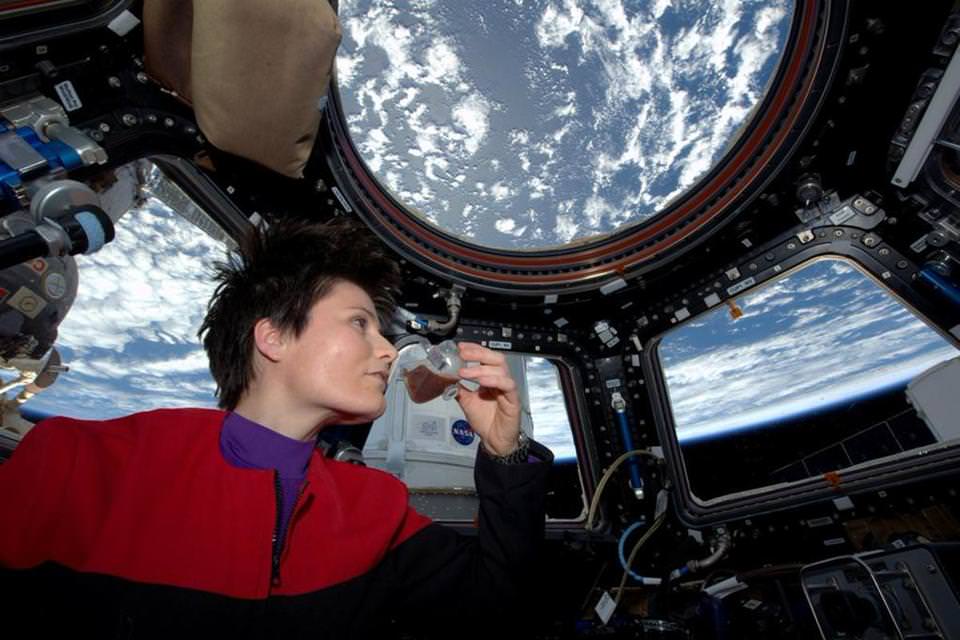
NASA astronaut Scott Kelly and Russian cosmonauts Mikhail Kornienko and Gennady Padalka will remain aboard the station after the Virts crew returns to begin Expedition 44.
Stay tuned here for Ken’s continuing Earth and planetary science and human spaceflight news.

